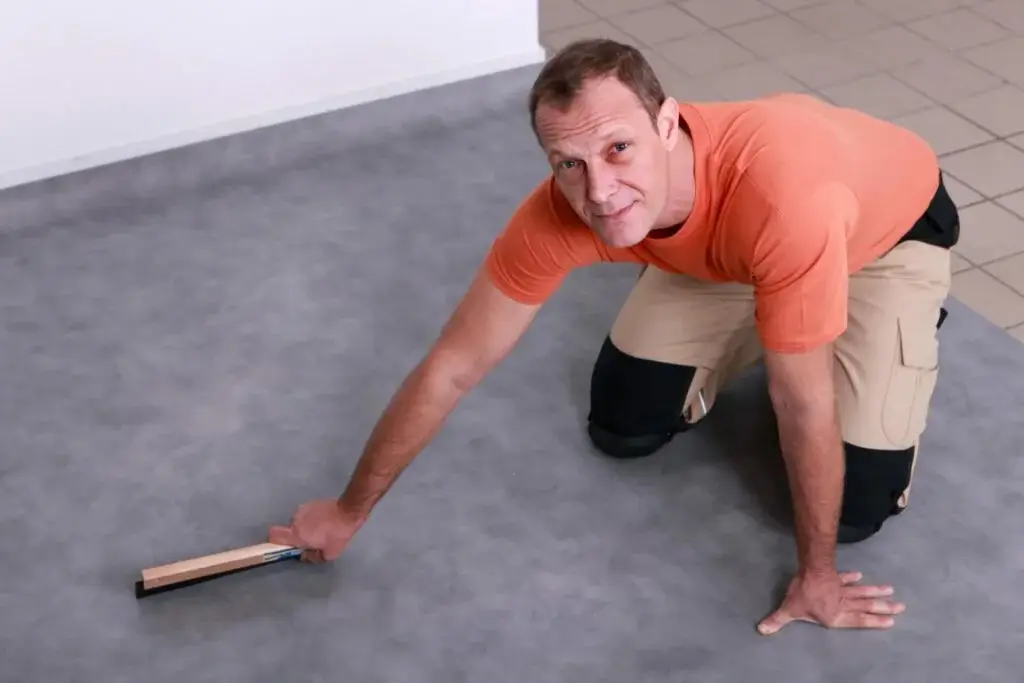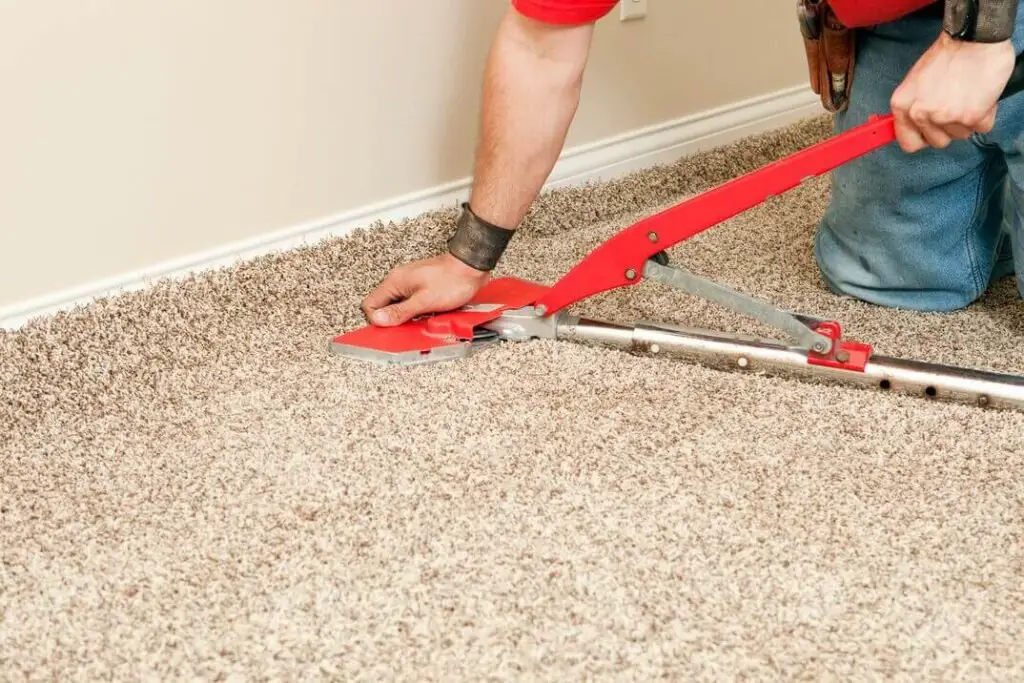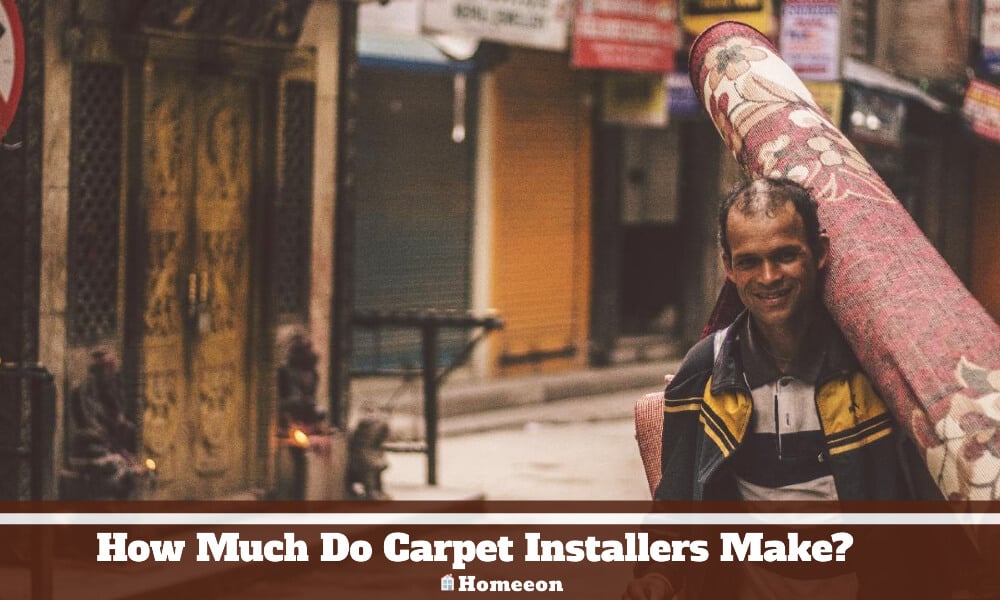Last Updated on August 9, 2023 By Emma W. Thomas
Carpet installers’ earnings vary based on experience and location. The average annual salary in the U.S. is around $42,000, ranging from $28,000 to $60,000. Factors like skill level, workload, and company size influence their income within the industry.
How Much Do Carpet Installers Make?
Carpet installation is a crucial part of creating warm and inviting spaces, whether in homes, offices, or commercial establishments. If you are considering a career in this field, it’s essential to know how much carpet installers make. In this listicle, we will explore the facts and figures surrounding carpet installers’ salaries to give you a clear picture of their earning potential.
- National Average Salary:
According to the Bureau of Labor Statistics (BLS), as of May 2023, the mean annual wage for carpet installers was $42,070. This is equivalent to an hourly wage of approximately $20.22. Keep in mind that this average can vary depending on factors such as experience, location, and employer. - Experience:
While entry-level carpet installers may start with lower wages, experienced professionals can expect increased earning potential. As installers gain knowledge and expertise in the field, they are likely to earn higher salaries. Building a strong customer base and a positive reputation can also lead to better-paying projects. - Factors Influencing Salary:
Several factors can influence the salary of a carpet installer. These include location, job demand, and the type of employer. Urban areas with higher living costs often have higher pay rates for carpet installers. Additionally, self-employed installers may earn more than those working for companies due to the potential for higher project rates and increased flexibility. - Regional and Metropolitan Variances:
Salaries for carpet installers may vary significantly across different regions and metropolitan areas. This discrepancy is primarily influenced by variations in living costs and the level of demand for carpet installation services. For example, carpet installers in metropolitan areas such as San Francisco or New York City tend to earn higher salaries compared to those working in smaller cities or rural areas. - Additional Earnings:
Carpet installers may have opportunities to earn additional income through overtime work, additional projects, or providing other installation services beyond carpets, such as vinyl or laminate flooring. Offerings such as repair and maintenance services can also contribute to increased earnings. - Industry Outlook:
The demand for carpet installers is projected to grow modestly in the coming years. As individuals and businesses continue to invest in creating attractive interior spaces, the need for skilled carpet installers will persist. Staying up-to-date with industry trends and enrolling in relevant training programs can enhance job prospects and potentially lead to better-paying opportunities.
The salary of a carpet installer can vary based on location, experience, and other influential factors. However, the national average salary provides a useful benchmark, currently standing at approximately $42,070 per year. As individuals gain experience, build their reputation, and expand their skills, they can potentially earn higher salaries. The demand for carpet installers is expected to remain steady, making it a viable career choice for those interested in this field.
Highest Paying States For Carpet Installers in the USA
| State | Avg. Salary | Hourly Rate |
| Connecticut Nevada North Dakota Mississippi New Jersey Delaware California Maryland Rhode Island New Hampshire Utah Louisiana Ohio Vermont Massachusetts West Virginia Montana South Carolina Arizona Missouri Iowa Colorado Maine New Mexico Michigan Alaska Kentucky Virginia District of Columbia Nebraska South Dakota Hawaii Idaho Illinois Washington New York Kansas Arkansas Indiana Texas Pennsylvania Wisconsin Tennessee Oregon Georgia Florida Oklahoma North Carolina Alabama Minnesota Wyoming | $48,353 $43,070 $39,369 $38,253 $51,590 $46,570 $46,725 $44,320 $46,884 $43,294 $36,988 $38,352 $38,358 $41,279 $45,215 $39,581 $36,274 $36,405 $36,718 $36,023 $34,770 $35,765 $35,850 $35,539 $36,039 $42,003 $36,608 $36,253 $43,509 $35,896 $35,913 $36,497 $31,861 $35,650 $33,360 $34,897 $34,037 $32,195 $31,620 $30,233 $31,871 $33,246 $24,134 $26,301 $24,598 $25,553 $24,390 $25,116 $24,800 $25,588 $23,816 | $23.25 $20.71 $18.93 $18.39 $24.80 $22.39 $22.46 $21.31 $22.54 $20.81 $17.78 $18.44 $18.44 $19.85 $21.74 $19.03 $17.44 $17.50 $17.65 $17.32 $16.72 $17.19 $17.24 $17.09 $17.33 $20.19 $17.60 $17.43 $20.92 $17.26 $17.27 $17.55 $15.32 $17.14 $16.04 $16.78 $16.36 $15.48 $15.20 $14.54 $15.32 $15.98 $11.60 $12.64 $11.83 $12.29 $12 $12 $12 $12 $11 |
Carpet Types And Their Installation Charges

Carpets are made from different designs, yarn, and textures and are meant for other house areas. Your carpet’s pile significantly impacts its durability, ease of maintenance, and comfort. Pile refers to your carpet’s surface, and its feel is determined by the weaving style of the carpet’s fibers.
Here are some of the most popular carpet types and the estimated costs for each type of carpet:
1. Loop Pile Carpets
Loop pile carpets refer to carpets whose fibers have been left in their looped form, giving a low and firmly woven rug like Berber. Loop pile carpets are trackless and don’t show footprints or vacuum marks. They are also durable and ideal for high-traffic areas such as hallways and staircases. These carpets have multicolored threads that add texture and concealment and help to hide stains and dirt. The only disadvantage of these carpets is that they can be snagged by pet claws or sharp objects, making them look shriveled over time. Loop pile carpets cost about $2 to $5 per square foot to install.
2. Cut Pile Carpets
Cut pile carpets are those whose looped fibers are cut in half resulting in a longer and looser thread with more movement. There are different types of cut pile carpets depending on the length and thickness of the fiber used. These types of rugs are comfortable to step on while standing or lounging but require more effort to clean and maintain. Dirt and loose particles spread and hide in between the fibers. There are four subcategories of cut pile carpets, and each category has a different installation price.
a) Plush– also referred to as Saxony is the most popular cut pile carpet type and resembles a freshly-mowed lawn. It is subject to fluffing and shedding, but it can last for up to ten years in low-traffic areas. It costs anywhere between $2 -$8 per square foot to install this type of carpet.
b) Textured Saxony– this style features twisted fibers that create a permanent curl and is more resistant to wear and tear. This type of carpet doesn’t show lines and is excellent for medium-traffic areas. It would cost you about $4-$12 per square foot to install this type of carpet.
c) Frieze– this carpet style resembles textured Saxony but twists more tightly, thus curling over. It is highly recommended due to its affordability and durability, making it ideal for high-traffic areas. It costs $1- $8 per square foot to install this type of carpet.
d) Cable– this type is softest to feel since it’s made from longer and thicker yarn. It is ideal for low-traffic areas since it’s prone to wear and matting. Cable carpets cost between $5-$8 per square foot to install.
3. Cut And Loop Carpets
Some carpets have combined loop and cut pile styles to make unique designs and patterns that add texture to any space or room. This style is an excellent choice for medium and high-traffic areas since it conceals lines and stands up well. These mixed-style carpets cost around $5-$10 per square foot to install.
Cost Of Carpet Installation By Material
As mentioned earlier, the cost of carpet installation varies depending on the material of the carpet used. Let’s look at different carpet materials and how much it would cost to install each. It is important to note that natural carpet materials cost more than synthetic ones.
1. Wool– carpets made of wool have a luxurious feel and look elegant in any space since they are made of premium quality fiber and are eco-friendly. Woolen carpets are expensive to install but end up saving you a lot in the long run. They are easy to clean and stain-resistant, making them long-lasting. They are ideal for high-traffic areas but should be kept away from moisture and wet areas. The average cost of installing carpets made of wool is $7 per square foot, but you can opt for a Berber carpet, which is pricier to install.
2. Cotton– cotton is pricier than synthetic carpets but is cheaper than wool. If you have pets or small children, stay away from this material since it stains easily. Cotton is soft and feels comfortable to step on and also has low amounts of volatile organic chemicals. Cotton carpets cost $7 per square foot to install.
3. Polyester– Polyester is a popular synthetic carpet material that is durable and least resistant to fading. Polyester carpets have beautiful colors and are non-allergenic, making them suitable for humid areas such as basements. Polyester carpets can be used in medium-traffic areas. It costs about $1 – $3 per square foot to install polyester carpets.
4. Nylon– nylon carpets are becoming popular in the united states due to their durability and affordability. Nylon carpets replaced acrylic since they are non-fading, ideal for high-traffic areas, and suitable for both indoors and outdoors. Installing nylon carpets costs $4 on average.
5. Olefin or polypropene- these carpet materials are made from recycled plastic and are growing in popularity each day. These carpets are resistant to sun-fading, moisture, staining, and bleach. Its costs $2 per square foot to install these carpet types and they are quite durable.
Other Factors Affecting The Cost Of Carpet Installation

Apart from the room’s material, size, and type of carpets, some other factors are to be considered in the carpet installation quotation. These include labor costs, furniture removal, hauling out old flooring, shape, room size, and features such as staircases or tight corners. Some installers will also charge extra if the installation is being done on a building’s high floor. It is essential to understand and account for all costs involved to know how much a project will cost you.
Conclusion
Carpet installation is expensive but worth every penny; it is also a viable business for anyone looking to start. It is not capital-intensive and can bring you handsome profits.
References:
https://www.indeed.com/career/carpet-installer/salaries
https://www.zippia.com/carpet-installer-jobs/salary/
Emma is a graduate of Domestic Science or Family and Consumer Sciences (Home Economics) from the University of Wisconsin. She has 7 years of experience Working with the strategic section of BestBuy and now writing full-time for Homeeon.
From Managing the Home, Interiors, Cleaning, and Exteriors to Gardening and everything about Making A Home Liveable – is her passion and this Homeeon is the result of this.
Emma loves decorating her home with the best stuff found online. She cares about quality over anything and writes reviews about them here in Homeeon. Get in touch with her over Pinterest.
Keep reading her blogs.

